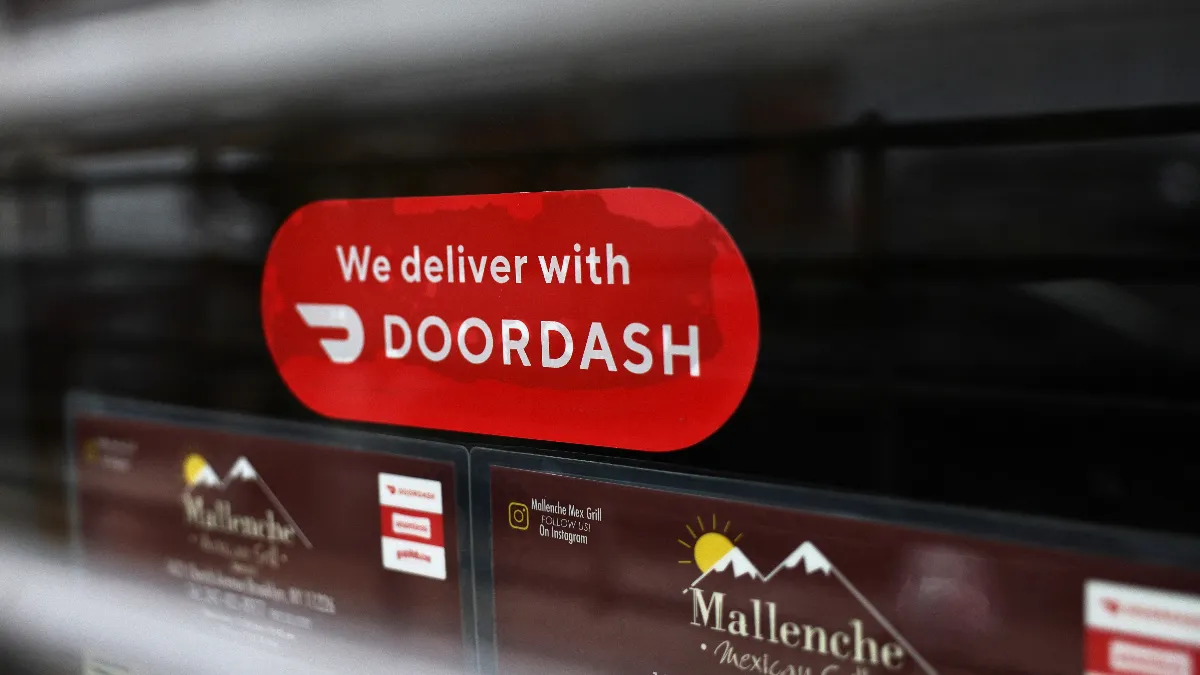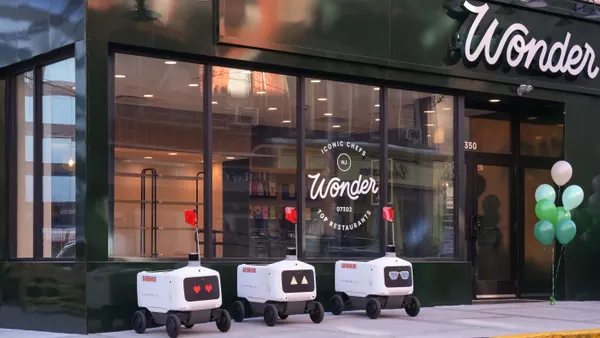Dive Brief:
- DoorDash filed a patent application Tuesday for an autonomous vehicle that would include a storage compartment for perishable goods.
- The AV would include a sensor module for receiving data, such as audio, video, radio waves and backscattered light waves, for navigation. An onboard computer would process the data to navigate it alongside motor vehicle and pedestrian routes, the application said.
- While the company said patents don’t necessarily indicate what’s under development, DoorDash previously said in November that one of the goals of its DoorDash Labs is to automate the middle mile, reducing individual efforts for delivery and provide Dashers an ability to fulfill more orders.
Dive Insight:
DoorDash has been testing various autonomous delivery systems for years, including partnerships with Starship Technologies, ground-delivery robot maker Marble and General Motors’ Cruise Automation. It also acquired Scotty Labs in 2019 and Chowbotics in 2021, and filed two patents for AVs in 2019.
"DoorDash Labs' goal is to develop and implement robotics solutions that complement the Dasher community, increase efficiency in our overall network, and result in a more efficient, improved experience for all audiences DoorDash serves,” a spokesperson said in an email to Restaurant Dive.
Specifically, DoorDash said previously it was looking into a “hub to hub model,” in which orders would be aggregated in an area with high merchant density like a shopping mall or DashMart. A robot would ferry orders to a consumer hub where delivery drivers could pick up orders closer to the endpoint.
“Our team is actively building the tools that support autonomy alongside the complexities and dynamism of our Marketplace,” DoorDash said in November. “Logistics require tight integration for handoffs and assignments, so we’ve built our dispatch system to accommodate robotic integration. We’ve identified exactly how automation can enhance the delivery experience today, and are testing very specific integration points within our network.”
With DoorDash and its competitors continuing to face issues related to recruiting and retaining drivers, who are earning less per order due to skyrocketing gas prices, delivery bots could supplement drivers. DoorDash’s plan to automate the middle mile would also allow more drivers to deliver more orders, which would then boost earnings without burning through additional gas driving to and from different locations at a time. Delivery bots also make short deliveries and small orders more cost-effective for consumers.
DoorDash isn’t alone in its consideration of AVs. This year Uber Eats is piloting delivery bots with Serve Robotics, a company that was previously part of Postmates before it was spun off post-acquisition. It also partnered with Motional for a pilot this year to test its all-electric autonomous vehicles. Grubhub partnered with Cartken in June to bring robot delivery to college campuses, starting with a pilot in spring at the Ohio State University. It also previously partnered with Yandex at specific universities, but the relationship ended in March.












